Posts Tagged Restoration
26″ Crescent Band Saw Base
Posted by Christopher in Projects, Tool Restorations, Workshop Design on November 10, 2014
My current workshop is half of a two car garage that I share with my girlfriend’s beloved Mazda. With my recent slew of machinery purchases, space management has become quite important. Furniture dollies and casters are a blessing when shuffling equipment around.
The base that the band saw came with is designed to be fastened to the floor and doesn’t lend itself to moving around a small shop easily. This is what I started with…
Whoever designed and built this base did a great job. As part of a Universal Woodworker, the saw was fastened to a large cast iron base that was about 6 inches tall. The base shown above mimics the original base.
The saw with a motor weighs somewhere in the neighborhood of 800 pounds. I need the cart to be strong enough to hold the saw and tall enough to position the table at a comfortable work height. Metal was the material of choice and after some research and a half dozen phone calls I found a local distributor.
I used a chop saw to make the first set of cuts, leaving extra length just in case things needed to be adjusted with the grinder. My experience with the chop saw was less than favourable. Luckily, David introduced me to a new friend of his who was kind enough to let me cut everything again using his horizontal band saw. The band saw produced a clean accurate edge which made welding everything together easier. David joined in with the welding.
After a few hours of playing with the welder, this is what I had to show for it. The next thing that I did was to drill the holes for the 4 bolts that fasten the main casting to the cart. After that I ground away all of the unsightly slag, slapped on a coat of primer and then couple coats of black.
While the paint was drying, I started working on building a deck for the cart. David had a pile of reclaimed oak flooring that he was nice enough to let me pick through. I cut everything to a rough length and removed a few nails before gluing everything together.
Here’s the deck glued and clamped up. I set this aside to dry for a couple days while I focused on dressing up the casters.
The casters I had on hang had been used previously to move the lathe. I disassembled them, painted the body, and cleaned the wheel up with a flap-wheel. Here’s a before and after.
By the time that I’d finished the casters the oak deck was ready to be finished. I started by cutting it to size with the table saw and then working it with a couple hand planes until everything was smooth. Here it is fastened to the freshly painted frame.
I applied a few coats of danish oil and attached the casters. Here’s the finished cart, ready to move the band saw around the shop.
And here’s the frame mounted to the new base. It’s a big improvement over what I started with and will make life a little easier in my current workspace.
Next up I’m working on the upper wheel assembly and blade guide. Thanks for checking in on my progress and please let me know what you think.
26″ Crescent Band Saw Frame Restoration
Posted by Christopher in Projects, Tool Restorations on October 23, 2014
A few days ago I took the band saw apart and meticulously documented and photographed the disassembly. Hopefully I took enough pictures…
Now it’s time to start working on removing the John Deere green and applying something a little less “farm”. Don’t get me wrong, I like the green and yellow color scheme but it belongs on two things; tractors and implements. My plan of attack for the band saw is to start with the frame and then simply add components as I complete them. Here’s what I started with:
From what I could tell, the green was just spray painted over the original flat black. I took the frame outside to avoid filling the garage with lead based paint dust. You should assume that all old machinery is painted with lead paint and take precaution against inhaling it. I wore a commercial grade respirator, safety glasses and gloves. Using a wire and abrasive flap wheel on a 4-1\2″ grinder, I was able to strip the frame down to bare metal in just over an hour.
With the frame stripped, you could see and feel the texture of the casting. It was rougher than I anticipated. In order to smooth everything out a bit I applied a couple coats of body filler.
Once the filler had dried thoroughly, I sanded everything back to bare metal again using a flat block and 120 grit paper. In the next picture I’ve started sanding the frame and you can see how filler is left behind in the low spots. I did this two times before moving to the next step.
Once I was satisfied with the smoothness of the frame everything was wiped down with acetone in preparation for priming. Blue painter’s tape was applied over all of the babbitt bearings. I used Rustoleum professional duty grey primer. I applied thee coats, starting with a very light coat and got progressively heavier each time. The frame looked really good in grey.
The primer allowed me to see how the body filler worked on the frame. The result I was aiming for was smooth but not perfect. You can still see the major casting and assembly lines used in the manufacturing process.
After the primer had dried for several hours I applied the top coat. I used Rustoleum enamel spray paint in a satin finish, applying several coats using the same method as with the primer. Each coat was applied heavier than the previous and about ten minutes apart.
The paint color is “chardonnay” and turned out really nice. It’s not perfect but hopefully it’ll provide enough protection to keep this saw running for another 80+ years. Over the next few days, the paint darkened nicely to what you see in the following picture.
I’ve already started cleaning and painting components for the upper assembly but next I’ll be fabricating a new base for the saw and motor assembly.
Thanks for stopping by and please let me know if you have any thoughts or questions. Till next time…
26″ Crescent Band Saw Tear Down
Posted by Christopher in Projects, Tool Restorations on October 13, 2014
The band saw has been sitting patiently in the corner of the garage since sometime in June. I promised to get a few projects completed before starting any work on the saw.
Last week I finally finished the last project on my honey-do list and was able to start the refurbishment. This first thing I did was take pictures. Lots and lots of pictures of every part from multiple angles. I’ll be using these to make sure that things go back together properly.
I’ve done a fair amount of research and to the best of my knowledge, Crescent Machine Co. didn’t make saws with big OSHA style blade guards until they were purchase in1945 by Pittsburgh Equitable Meter and Manufacturing Company, which later became the Rockwell Manufacturing Company. The guard on my saw don’t look to bad but aren’t original and because of that I’m going to remove them permanently.
Lucky for me, whoever modified the blade guards used the original mounts. This is going to save me some grief when it comes time to make blade guards similar to those that came on the saw.
Taking the saw apart was pretty straight forward. I removed the blade first. My workbench is 46″ wide. I attempted to fold the blade up neatly but almost decapitated myself. After some practise with one of my smaller band saw blades and a pair of gloves I was successful.
Once the blade of death was out of the way, the rest of the saw came apart very quickly. I was able to tear it down to the frame while taking pictures and notes in an hour and a half. Here’s the saw completely tore down.
My plan is to start with the frame and then add to it as I work through each of the individual parts. This will hopefully free up room in the garage as the project progresses.
Stay tuned for the next update!
Crescent Machine Co. 26″ Band Saw
Posted by Christopher in Projects, Tool Restorations on October 12, 2014
Earlier this summer while looking through the local Craigslist adds I happened upon a posting for a large band saw. There was no picture and the description didn’t mention a name brand or any specifics. The saw was about 15 miles away and out of curiosity I contacted the owner and made plans to see it. I called David and off we went. This is what we found…
I wasn’t expecting this at all. I thought it was going to be a big Delta or Rockwell and was pleasantly surprised to discover a 26″ Crescent Machine Co. band saw.
We looked over the saw, and after some haggling settled on a price.
Here she is, securely loaded onto a trailer. We removed the tables and motor to make it easier to move. You can see the main table in the upper right corner of the trailer and the 3hp motor below it. I built a wooden base/pallet to increase the stability and help in moving on and off the trailer. The base had tabs for fastening the saw to a floor. I used lag bolts to secure the saw to the wooden base. Using 3/4″ PVC pipe, we rolled the saw down the trailers ramp and into the garage.
We had to remove the top blade cover to fit into the garage. Everything looks and feels great. The wheels turn freely and all of the adjustments work without any apparent issues. If you’re familiar with Crescent’s line of machinery, you’ve probably noticed that this saw is different from their standard band saw. Crescent manufactured a piece of machinery called the “Universal Woodworker” which contained an arbor saw, jointer, shaper and band saw all attached to a single base. Is quite an impressive piece of machinery as you can see in the image below. Everything ran on one motor and each station could be operated simultaneously. My band saw was originally part of an Universal Woodworker.
I couldn’t locate a serial number and probably never will because Crescent signed a single number to a Universal Woodworker which was typically stamped onto the arbor saw’s table. And because Crescent didn’t change many features on their band saws over the years it has been difficult to establish how old the saw is. I’ve looked through old catalogs online and the best I’ve come up with is somewhere between 1915 and 1930.
So what am I going to do with a 26″ band saw? Use it of course… But first I’m going to take her apart, clean everything up and restore her. Check back to see my progress and the finished product.
Rehabbing a Henry Disston & Sons No. 4 Backsaw
Posted by Christopher in Tool Restorations on August 14, 2013
A close friend of mine has a garage that I envy. Partly because I live in a one bedroom apartment (I don’t have a garage), and secondly because it’s filled with a impressive tool collection. At the end of his workbench hanging on the wall are several backsaws that I’ve always been curious about. They are flea market finds, but in remarkable shape and simply beautiful. In an attempt to be just like him I decided that I needed backsaws.
Since immersion into the world of antique tool hunting, my weekends have been spent visiting flea markets and antique shops. This weekend was no different. We set out Saturday morning and headed towards Alabama to explore the antique and flea markets in the Foley area. I was specifically looking for Stanley planes and Henry Disston & Sons handsaws. At our 2nd stop I passed on a Disston keyhole saw hoping that I’d find something more appealing as the day went on. I looked and looked and was convinced that the day was going to be a wash. Take note, that the antique shops in South Alabama really aren’t geared towards antique woodworking tools. We headed back into Florida disappointed that we wasted an entire day looking at shelves stocked with happy meal toys from the 1980’s. It was 4:45 PM and minutes before the doors locked when we decided to run into one of our local shops to see if they’d rotated in any new tools. As I approached the tool section, I immediately noticed a basket containing three or four saw tucked deep under a table in the corner. There was hope! The last saw in the basket was exactly what I was looking for. I quickly checked to make sure it was in usable shape and rushed to the counter. After some haggling, I walked out with a Henry Disston & Sons No. 4 backsaw for $25! Deal!
So here is what I got. The rust and crud didn’t look this bad in the store. I guess I was just mesmerized by the shear size and weight of this beast. She’s approximately 34 inches from tote horn to the toe of the plate and solid as a rock.
I did a quick search online to attempt to establish an age for this saw. http://www.disstonianinstitute.com/ is a great resource for anybody wondering about Henry Disston and his famous production of handsaws. From this site I was able to determine that this saw was manufactured between 1896 and 1918 based on the medallion and deep v-joint in the tote (handle).
So let’s rehab this beast! My goal in this is to bring the saw back to a usable state while removing the rust, dirt and crud that will eventually destroy it. I use products and procedures that remove the least material to do this and keep the patina and history in the tool. Also, this is my first post, and in the process of working through this got excited and forgot to take a few pictures. Sorry for any confusion. I’ll get better, promise.
What am I going to use? I stopped by the local hardware store and picked up a bunch of supplies for this task.
- Simple Green
- 0000 Steel Wool
- Scotchbrite pads (green ones)
- Paste Wax (Minwax)
- Brasso
- Mineral Spirits
- Abrasive Buffing Wheels for a Dremel (3 or 4)
- Wet/Dry Sandpaper (220, 500, and 1000 grit)
- 36″ marble slate
- Boiled Linseed Oil
First thing is to disassemble and clean everything to remove the loose crud and actually see what you’re working with. Make sure that when removing the nuts, to use the correct size screwdriver. The nuts are made of brass and are very soft. Using the wrong size screwdriver can damage them.

Check that out! I was really surprised to see how dirty the plate actually was. This is probably the first time the tote has ever been removed. The plate went straight into an electrolysis bath to remove the rust. If you don’t have access to an electrolysis bath, then there are several commercially available products that I’ve used with pretty good success. Evaparust and Krud-Kutter both work very well. Follow their directions and you can’t go wrong.
While the plate was cleaning, I went to work on the tote/handle. I started by wiping the handle down with mineral spirits using the steel wool to remove any loose wax, oil and loose debris. There are several methods to restoring a saw tote. I did a lot of reading before I decided which method I was going to use. Some people swear by the scraping method, others think that sanding is the way to go. I decided to try and use an abrasive buffing wheel with a Dremel tool and was very happy with he results. This method seemed to leave the nicest finish and removed the least material. Note: These wheels don’t last very long. I used three to clean up this handle.
This is where I got carried away. I was so impressed with how the tote looked that I forgot to take a picture before moving to the next step. When it was done, all of the built up gunk, paint and varnish had been removed. The handle retained the owner mark and wear from years of use. The next step for the tote was to stick it in a bath of boiled linseed oil (BLO) to soak for 24 hours. I decided to flip the tote every few hours to ensure that each side got the same exposure to the BLO.
The next step for me was to start deep cleaning the saw plate. Once the electrolysis has done it’s thing, you have to scrub the black residue off. I use a Scotchbrite pad and a little Simple Green. The electrolysis does a remarkable job! After a few minutes of scrubbing the plate was actually silver. Rinse the plate in water and dry it very well. Once again, I didn’t get a picture of this step-sorry.
Next step in the process is to lap the plate to bring back the shine. Lapping is a machining process in which two surfaces are rubbed together with an abrasive between them. Pictured below is my setup and supplies for lapping (this is what a plate looks like before lapping). I use a 36″ long marble slate as my lapping surface. You can get these in any hardware store in the flooring section. They are traditionally used as door entry plates and are fairly cheap.
Lapping can be a tedious process and takes some time. Before you begin, make sure that you are wearing gloves and have towels or rags handy as it gets messy quickly. You want to start with a low grit wet/dry sand paper and work through your highest grit. For the backsaw, I started with 220, went to 500 and finished with 1000.
To begin, pour a little mineral spirits onto the plate. Start by wetting the sandpaper in the spirits and then make long strokes applying medium pressure from one end of the plate to the other. Long strokes will reduce leaving transition marks where you repeatedly switched directions with the sandpaper. After 3 or 4 minutes rotate (not flip) the plate and continue to rub for an additional 3 or 4 minutes. This ensures that you are applying even pressure across the entire saw plate. The plate should start to look nice at this point. Flip the plate and repeat this process for the other side… Now that you’ve been rubbing for almost 20 minutes and your arms are getting sore, it’s time to do it all over again with the 500 grit sandpaper and then finally with the 1000. When your done, rinse the plate in Simple Green and water and dry thoroughly. If you’re happy with the result, apply a good coat of paste wax. This will keep the plate from flash rusting.
This is what my plate looked like! Looking at the blade you can see some patina and a little pitting, but the rust is gone and the shine is back!
My research indicated that all Disston saws had either a stamp or etch on the blade. Some backsaws have both a stamp and etch. The stamp on the spine of my saw reconfirmed that it was manufactured between 1896 and 1918. Unfortunately if there was an etch on my saw it did not survive the test of time. The etch can be fairly delicate – there are methods for preserving them that I will address in a future blog post. Now that the plate is finished, it’s time to turn our attention to cleaning the brass medallions and nuts.
I clean the brass hardware using Basso and a nylon brush. My rule of thumb when cleaning something is to use a softer material than the material being cleaned. The nylon won’t scratch or mar the brass. The picture above shows the hardware after cleaning. I didn’t intend on removing all of the patina but underestimated the effectiveness of the Brasso. I think the patina adds a nice touch to the finish. Once I determine a good method for cleaning the brass I’ll make a future post about it. For now, it will just have to look like a Chinese reproduction until a little patina develops.
Let’s take the tote out of the BLO bath! Grab a screwdriver or something and pick the tote up and let the BLO drain back into the container. By now, the tote should have darkened up significantly and gained some weight. The old dry wood will absorb quite a bit of the BLO. That’s fine though because it’s going to extend the life of the tote another 100 years.
After a minute, grab a rag and wipe off the remaining oil. At this point I was getting very excited. This handle looked and felt amazing! I couldn’t wait to get everything reassembled. So Let’s do it!
Gather all of the piece parts and a the flat head screwdriver and reassemble your saw. Be careful not to over tighten the nuts. You can break a post off by doing so, requiring a replacement which might be difficult to find. Once you have the saw assembled, apply a coat of paste wax on every surface to keep things clean. Now, step back and admire your work. This was my first restoration and I’m extremely pleased with the result.
And I believe this concludes my inaugural blog post (It’s a lot longer than I had anticipated). I learned a lot during this project and look forward to sharing my knowledge and discoveries in the future. Since purchasing this saw I have acquired a Disston D-8, No.7, and a No.12 – so check back to see how they turn out. Thanks for stopping by One Tool at a Time! If you have any questions or comments, please leave them below.
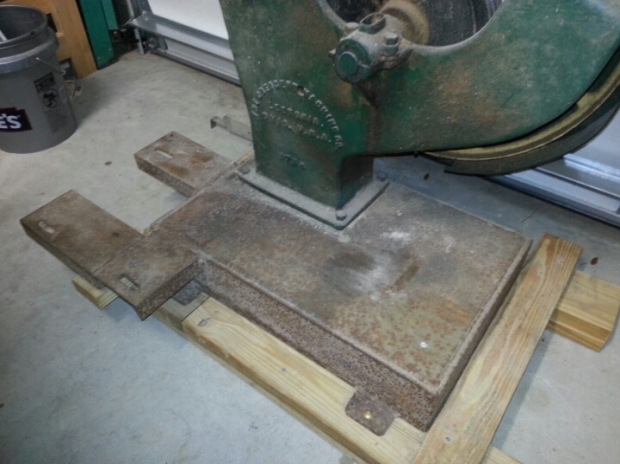
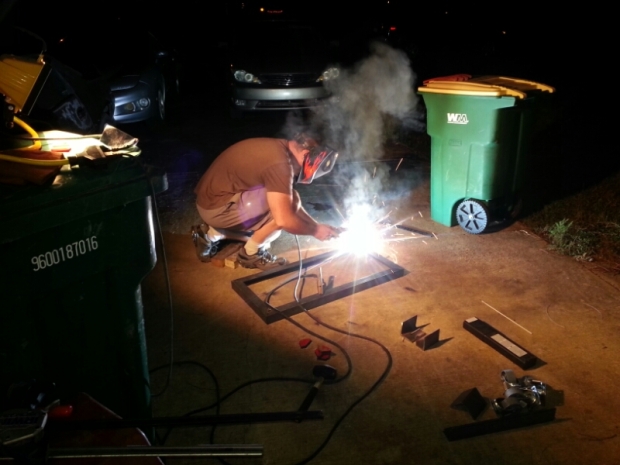
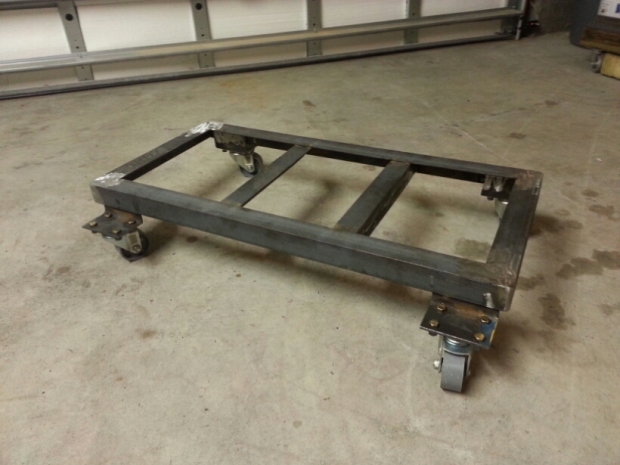
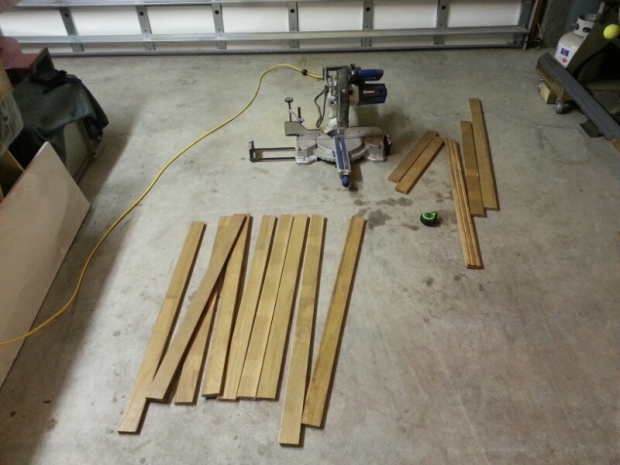
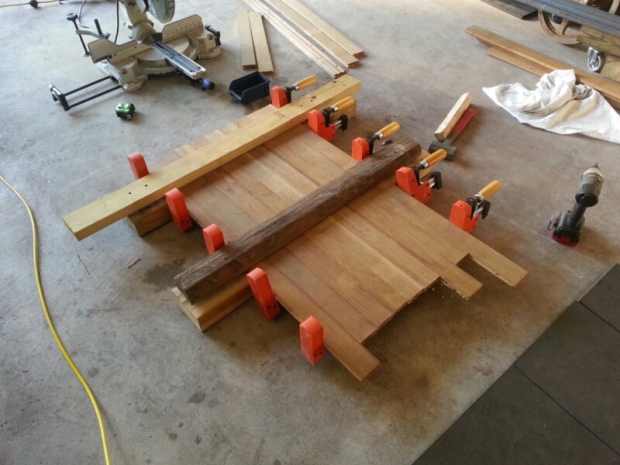
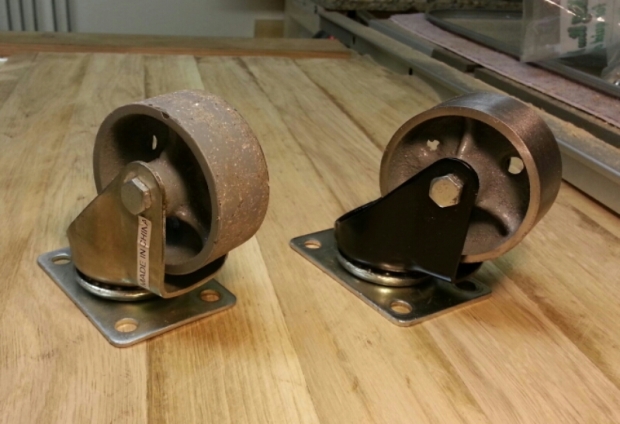
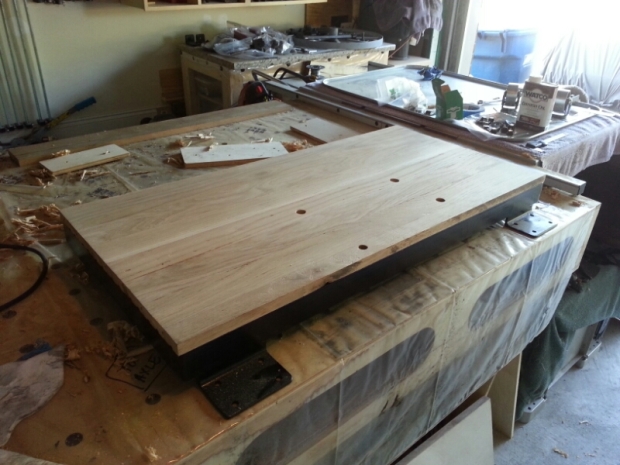
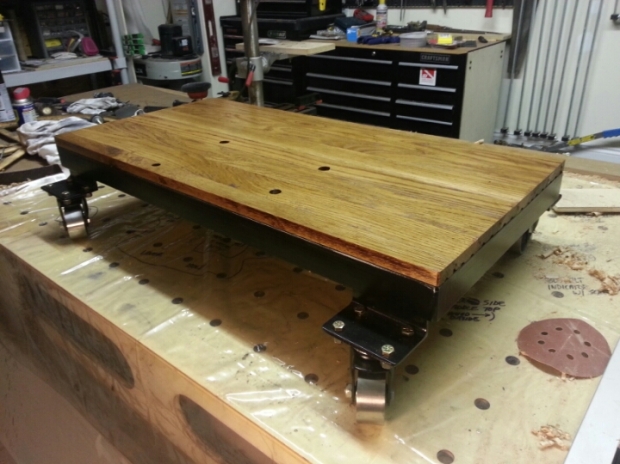
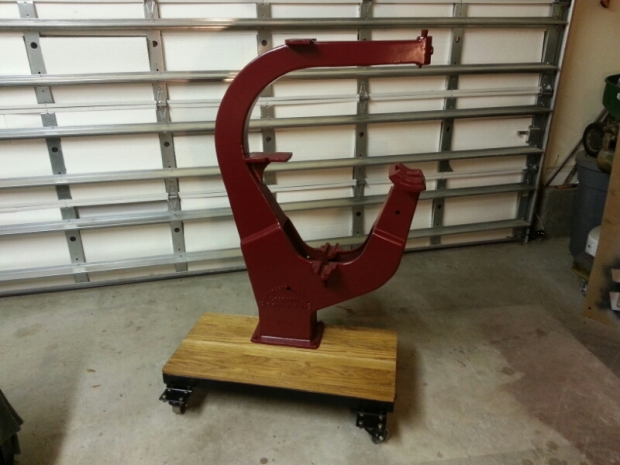
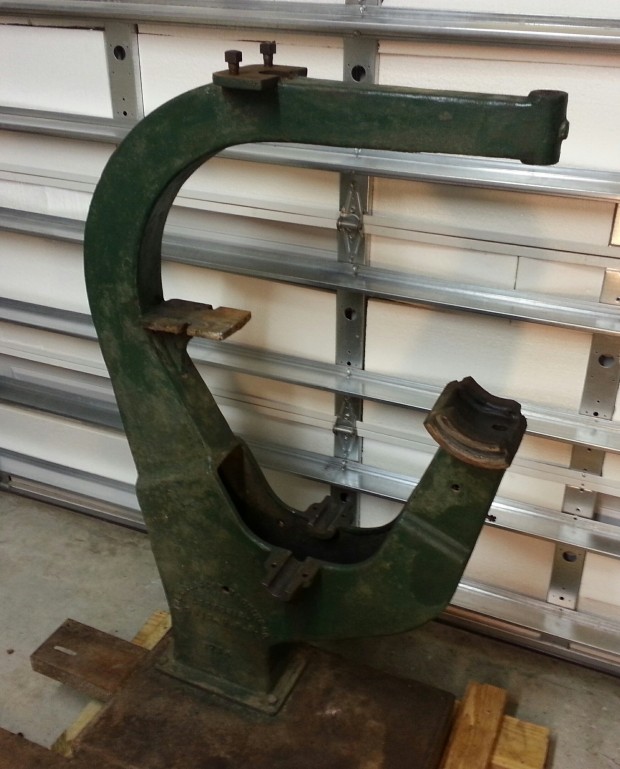
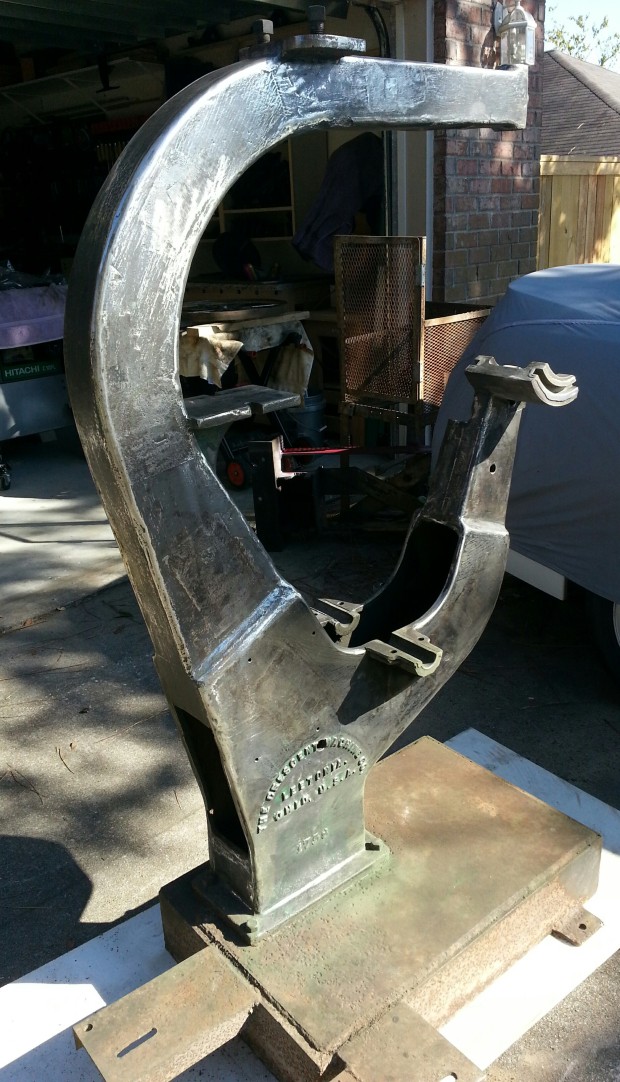
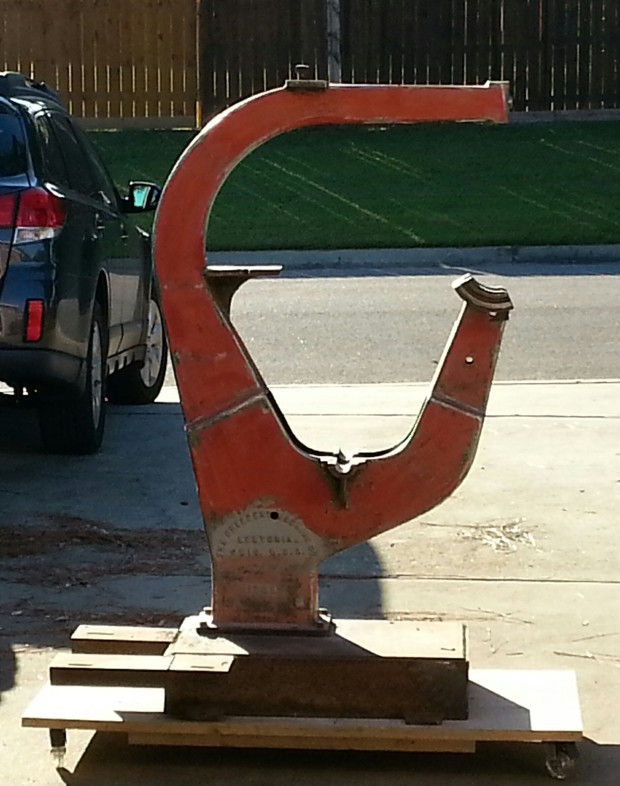
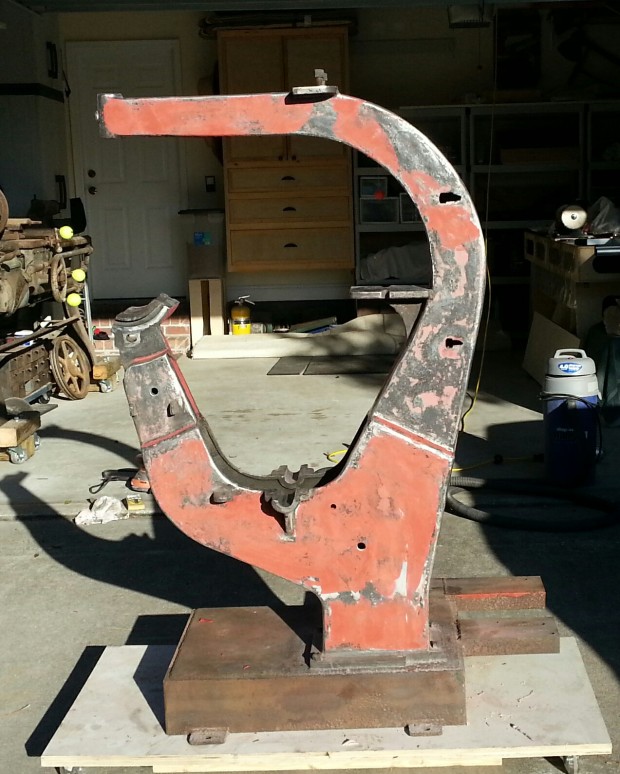
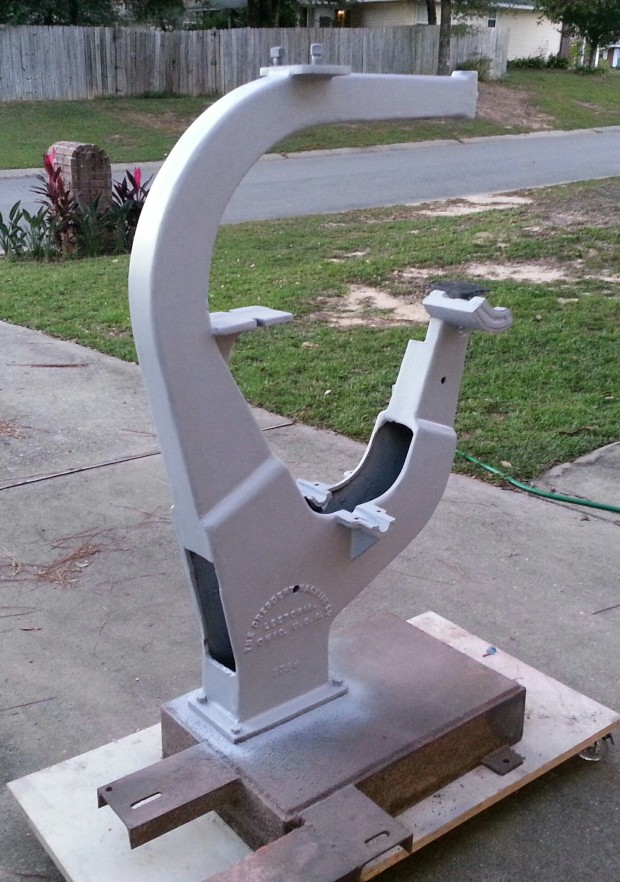
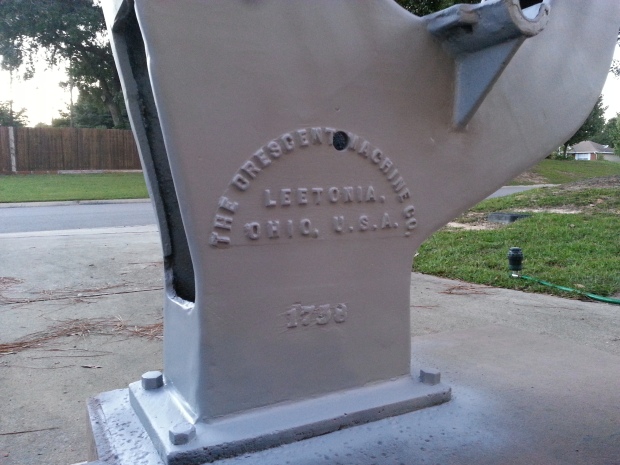
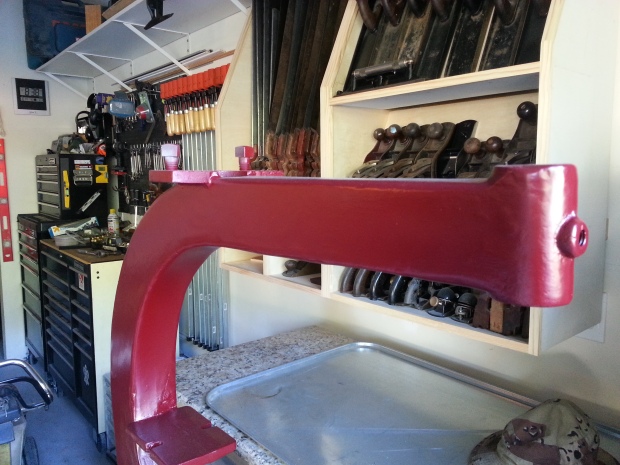
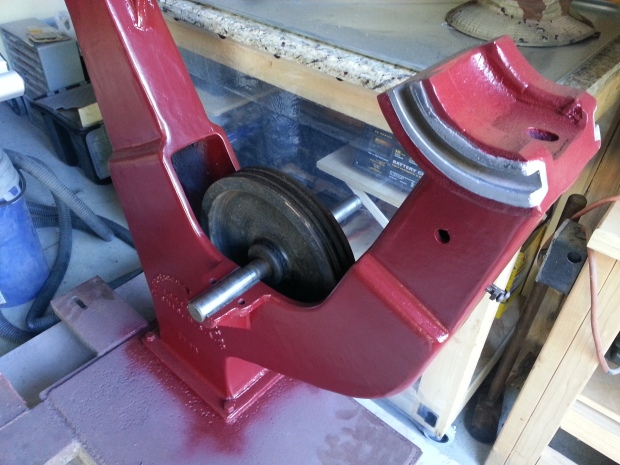
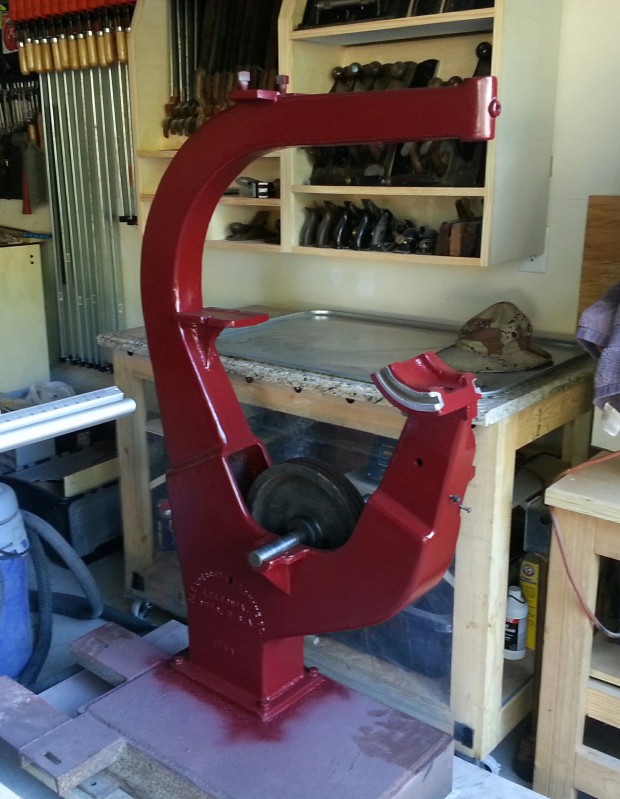
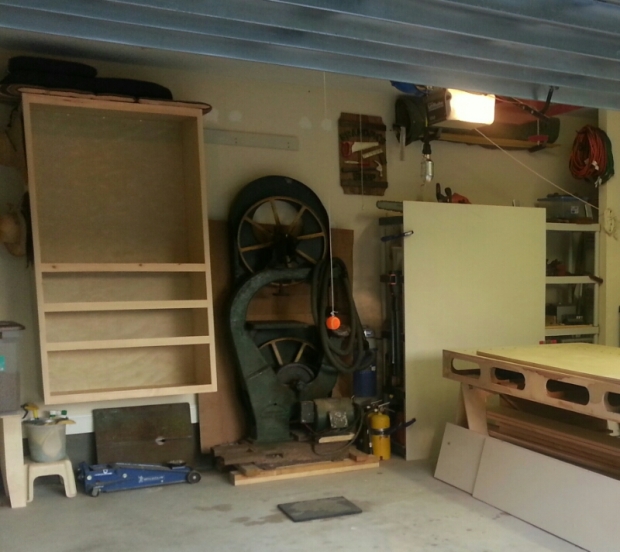
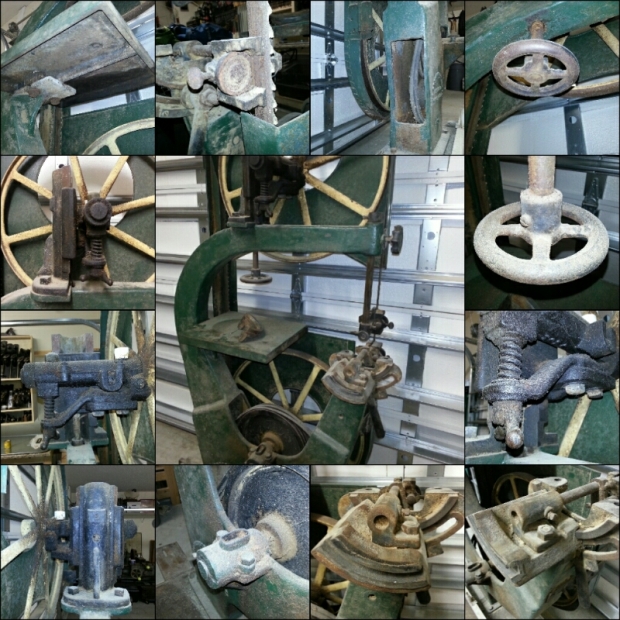
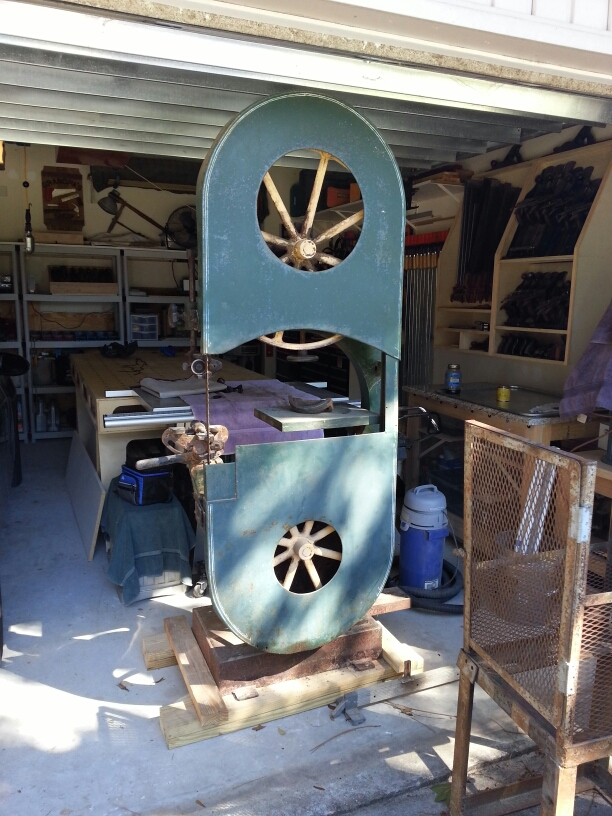
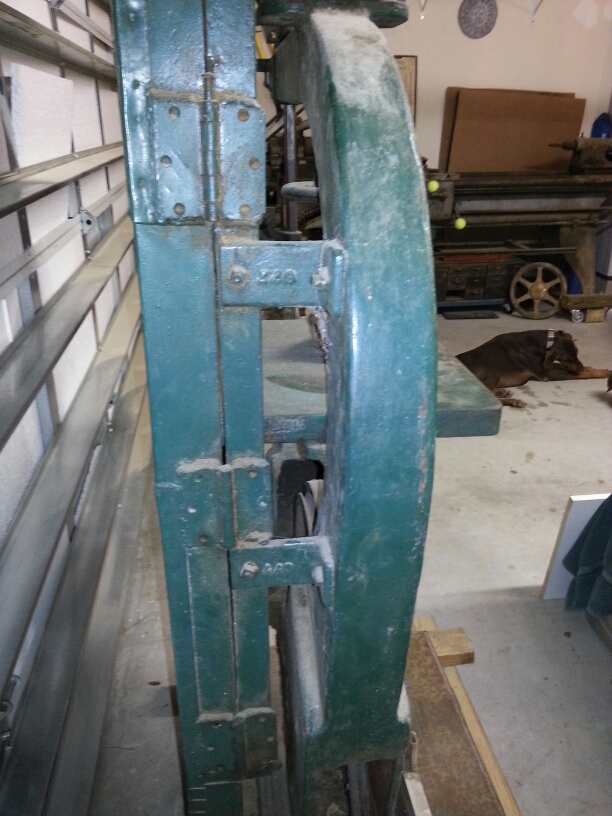
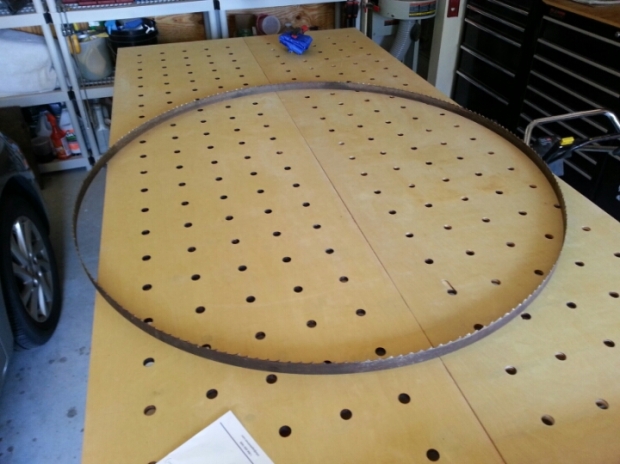
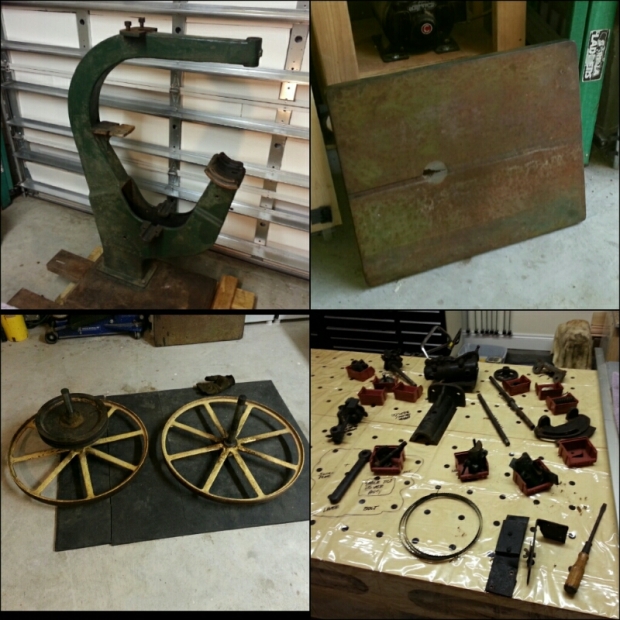
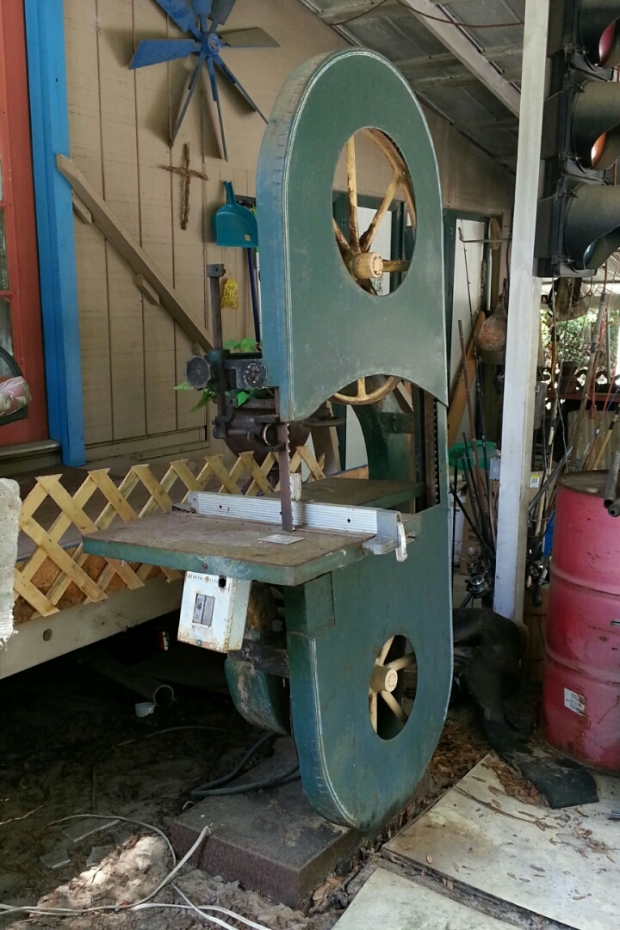
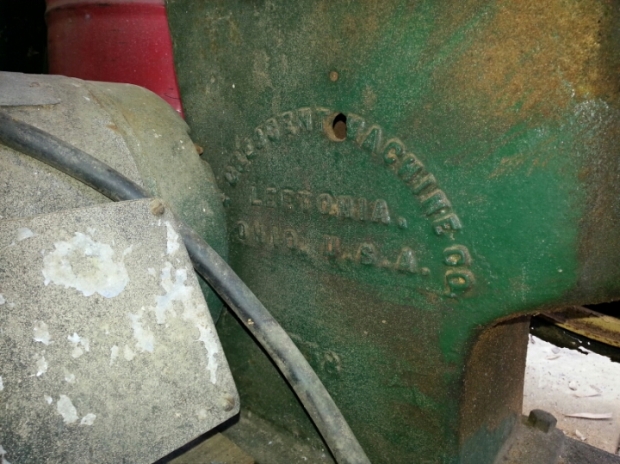
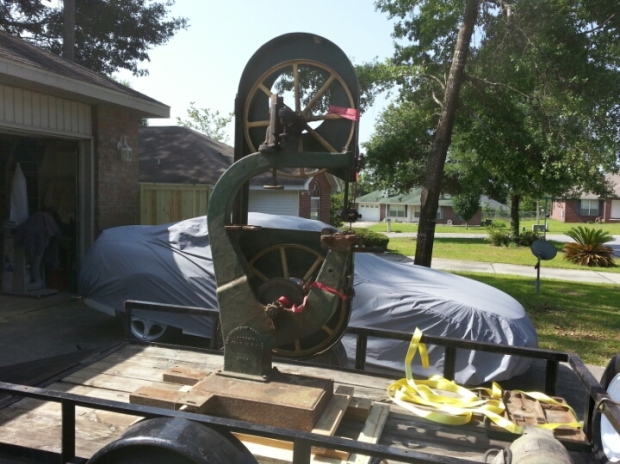
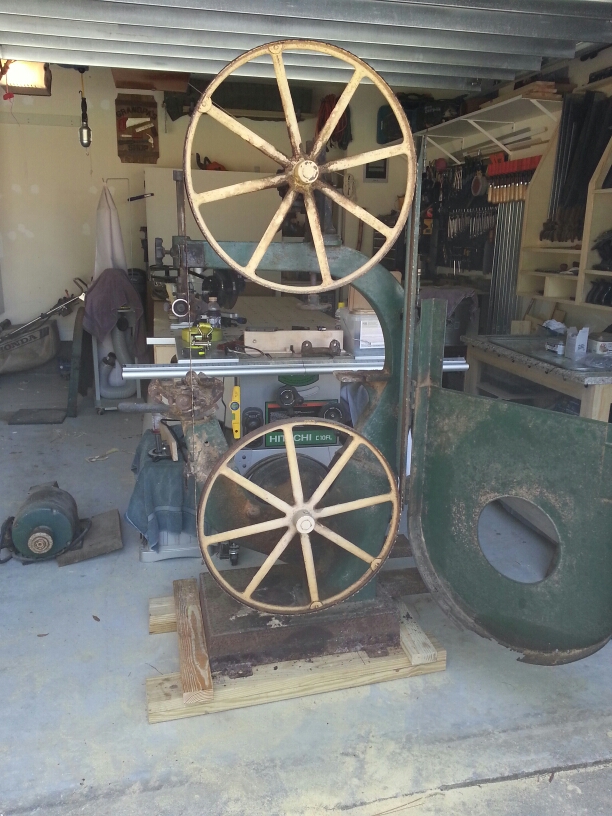
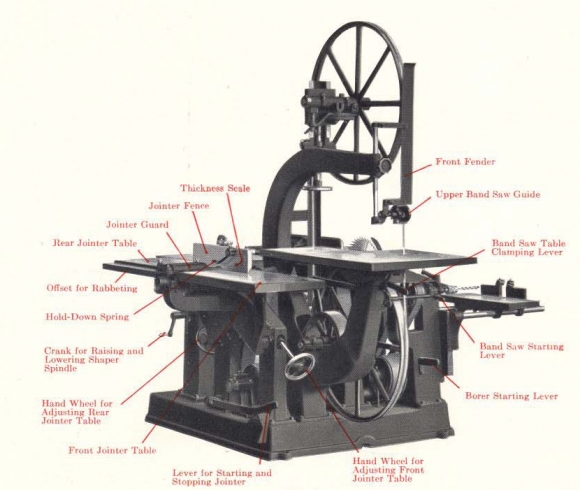













Recent Comments